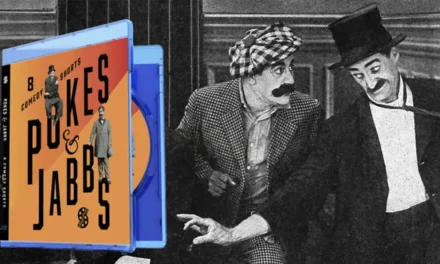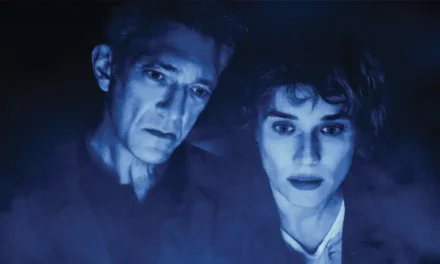In the 1990s, one of the most transformative therapeutic experiences didn’t unfold on a therapist’s couch but rather in a Saturday morning cartoon, aired between ads for L.A. Gear sneakers and the colorful chaos of Cap’n Crunch cereal. This show was Life with Louie, created by the late comedian Louie Anderson, who used it as a platform for a weekly reflection on his past.
Anderson faced his childhood demons, particularly his violent, alcoholic father, by reimagining him. Rather than erasing his father’s flaws, Anderson softened the fury into complaints and reframed the abuse into humor, effectively performing a delicate exorcism in the 8:30 a.m. time slot.
Watching Life with Louie, which aired on Fox from 1995 to 1998, was akin to stepping into a world drenched in muted ochres and dull blues, reminiscent of an endless Wisconsin winter. In an era characterized by animated chaos, where other shows featured mutants and wild animals, Life with Louie centered around mundane dramas like acquiring a bicycle horn or joining a chess club.
Yet, it was in this cultivated banality that Life with Louie demonstrated its unique and lasting power. It was not merely a children’s cartoon; it served as a public reckoning with Anderson’s private history.
Portrait of a Father as a Rambling War Machine
Life with Louie was rooted in Louie Anderson’s semi-autobiographical experiences. He voiced both his childhood self and the formidable figure of his father, Andy Anderson. Animated Louie is a sensitive, anxious child, a plump figure navigating the complexities of Midwestern boyhood. However, the true gravity of the show stemmed from Andy, a force of nature that affected everyone’s lives.
A World War II veteran, Andy was a constant source of critique, viewing the world through a lens of thrift, suspicion, and old-fashioned American resilience. His life lessons often manifested as cryptic, nonsensical aphorisms shaped by the traumas of his past.
This dynamic was vividly realized in an episode focused on chess. When young Louie discovers a talent for the game, Andy, instead of nurturing it, bombards him with warnings about the scorn chess players face, directly transferring his anxieties to Louie. Consequently, Louie hides his identity as “The Masked Chess Boy” during a tournament.
The pivotal moment comes when it’s disclosed that Andy was once the original Masked Chess Boy who used this alias to shield his love for the game from bullies himself. What initially appeared as cruelty is recast as a tragic love, an attempt to protect Louie from the same emotional scars he himself bore.
Andy’s character is further exemplified through his relationship with the family car, a failing Rambler that mirrored his own stubbornness. The car, perpetually breaking down, symbolized Andy’s resilience but also his denial about aging.
In one episode, when his wife, Ora, surprises him with a new car after the old one finally collapses, Andy feels insulted rather than grateful. He sees the new vehicle as an acknowledgment of defeat and instead chooses the familiar battle of keeping the old car running—a comical yet poignant portrayal of a man clinging to a relic of his past.
A Son’s Radical Empathy
This affectionate portrayal of Andy stands in stark contrast to the reality presented in Louie Anderson’s memoir, Dear Dad: Letters from an Adult Child. In it, Anderson shares a much grimmer reality: his actual father was a volatile alcoholic whose terrifying outbursts created a childhood filled with tension and anxiety. Anderson recalls becoming so sensitive that he could sense when his father had been drinking simply by the aura that permeated their home.
The real Andy went beyond complaints; he brandished a gun with menacing intent and would drunkenly confront neighbors, creating a household atmosphere rife with fear. The cartoon’s catchphrase “For crying out loud!” was a sanitized echo of a much darker reality, one where Louie was often awoken by shouts directed at him.
For much of his life, the source of this rage remained a mystery to Louie. However, during a hospital visit late in his father’s life, he overheard Andy revealing his own buried past to a social worker. It became clear that Andy had been a troubled child, shaped by his own parents’ alcoholism, who had abandoned him in front of their church for adoption.
This traumatic experience left a lifelong wound, which he tried to escape by lying about his age to join the military. Despite his musical talents, agreeing to put those dreams aside to work manual jobs added layers to his pain, leading to a life lived in discomfort.
This hospital revelation marked a turning point for Louie; witnessing his father cry was profound. As Andy recounted his history, Louie longed to embrace him and question why he had never shared his story earlier. Yet, as the moment of vulnerability arose, Andy reverted back to his familiar demeanor, attempting to deflect with pride by mentioning Louie’s comedy career.
Louie’s choice to voice both his younger self and his father was transformative. Every recording session became a dialogue between his innocent childhood self and his paternal tormentor. By giving a voice to his father, Louie regained control, shaping his father’s incoherent memories into funny, relatable stories. This dynamic was supported by Louie’s mother, Ora (voiced by Edie McClurg), who served as the calm heart of the show, creating a safety net amidst the chaos.
The show garnered attention, winning Louie two Daytime Emmy Awards for his performances and remarkably securing the Humanitas Prize for three consecutive years—an unprecedented accolade for an animated series.
Interrogating the American Past
Premiering in 1995, Life with Louie fit seamlessly into a wave of nostalgia for an idealized post-war America. However, rather than celebrating this era, it cleverly subverted its imagery. The show utilized familiar symbols—like the old Rambler and community gatherings—to delve into universal struggles that were far from simplistic.
The series wasn’t merely a tribute to the 1960s; it frankly explored the myth surrounding that era. Thanksgiving, traditionally viewed as a harmonious family feast, became a backdrop of unresolved grievances. A trip to the state fair morphed into a stage for quiet despair, where small victories felt like the measure of one’s worth.
Life with Louie laid the foundation for a new form of animated confession. This approach found a more explicit representation in Bill Burr’s adult cartoon, F is for Family (2015-21), where both shows feature comedians exploring their complex relationships with their fathers.
Burr’s Frank Murphy is a louder, more unrestrained evolution of Andy Anderson’s disgruntled persona. While Andy’s war trauma translated into bewildering remarks, Frank’s background fuels explosive tirades. The underlying anxieties, though, remain consistent—simply amplified.
Ultimately, Life with Louie encapsulated the uniquely American plight of men who equate love with provision, sent off to bear witness to the world’s horrors and expected to return as stoic figures. The show dissected the intricacies of a flawed man, choosing understanding over condemnation.
This act of empathy illustrated by a son granting a voice to the father who inflicted pain remains one of television’s most subtly profound achievements. It suggests that the past, while omnipresent, can be approached with humor and artistry, enabling us to confront our ghosts. For many of us reflecting on our past, that understanding might just be sufficient.



























